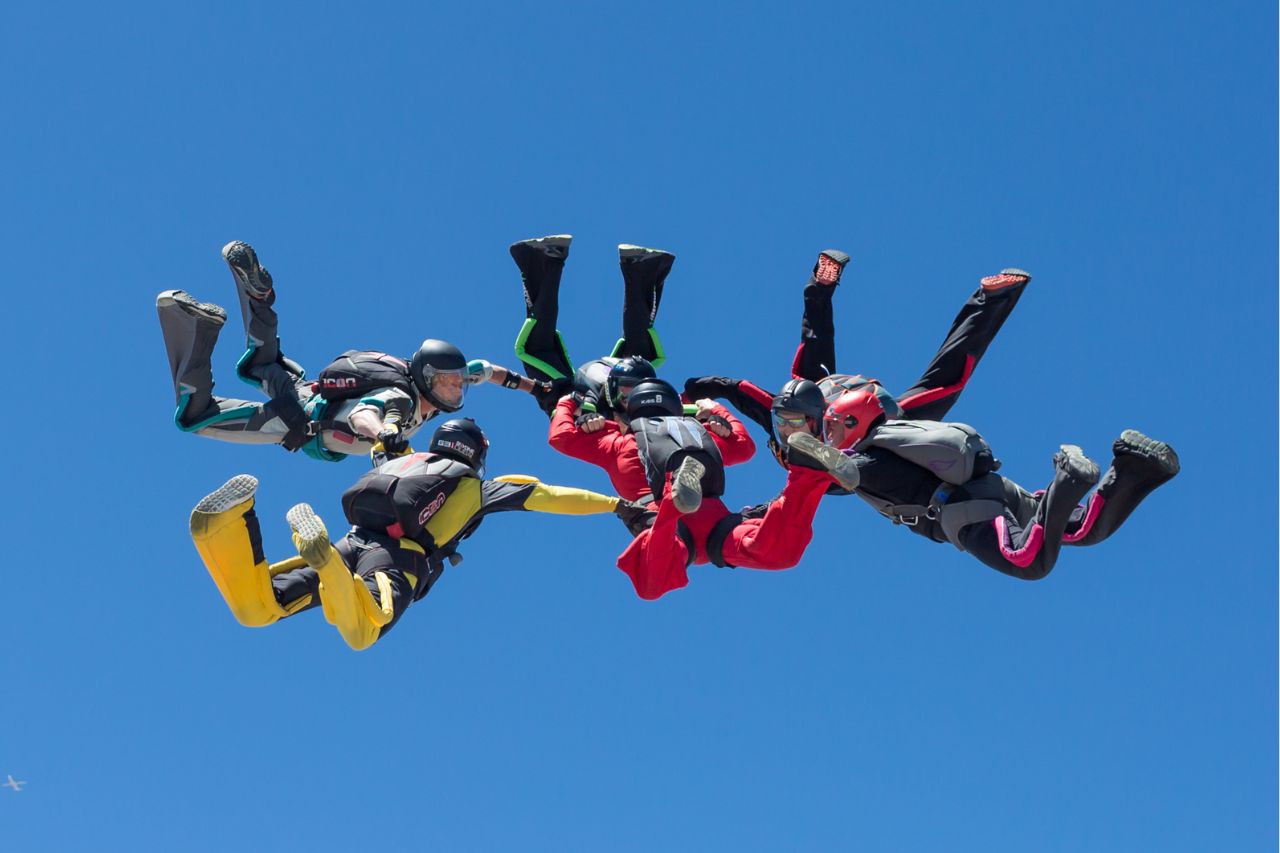innovuscollege.com – Parachute sports are some of the most exhilarating and popular adventure activities in the world. From the rush of freefalling to the serene glide of canopy flight, parachuting offers a unique combination of adrenaline and breathtaking views. Whether you’re interested in traditional skydiving or the wide range of other parachute-based activities, here’s a look at what makes parachuting such an incredible sport, along with some tips for beginners.
1. Types of Parachute Sports
Parachuting, also known as skydiving, includes a range of thrilling disciplines. Here are some of the most popular types:
- Traditional Skydiving: This is what most people think of when they hear “parachuting.” Skydivers jump from an airplane at high altitude, experience a period of freefall, and then deploy their parachute to safely land.
- BASE Jumping: A more extreme version of parachuting, BASE jumping involves jumping from fixed objects like buildings, cliffs, or bridges. BASE is an acronym for Building, Antenna, Span, and Earth.
- Wingsuit Flying: Skydivers wear specially designed suits with fabric wings between the arms and legs, allowing them to glide through the air like flying squirrels. Wingsuit flyers eventually deploy a parachute to land safely.
- Paragliding and Parasailing: Although technically not parachuting, these sports involve a parachute-like canopy. In paragliding, athletes launch from hillsides, while parasailing involves being towed by a boat.
2. The Basics of Skydiving
For beginners, skydiving is the most accessible and safe way to experience parachuting. Here’s a look at how it works:
- Training: Beginners usually start with tandem jumps, where an experienced instructor handles the parachute and guides the jump. Tandem jumping is a great introduction to skydiving with minimal training.
- The Freefall: Skydivers experience a rush of freefall that typically lasts around 30-60 seconds before the parachute is deployed.
- Canopy Flight: After deployment, the parachute’s canopy opens, and the skydiver can control their descent with toggles, gliding gently to the ground.
As skydivers gain experience, they can move on to solo jumps and even earn licenses for more advanced disciplines, including formation skydiving and wingsuit flying.
3. Safety in Parachute Sports
While parachuting carries an element of risk, it has become increasingly safe due to advancements in equipment and training. Here’s how:
- Modern Gear: Parachutes are designed to be stable and responsive, and backup systems (reserve parachutes and automatic activation devices, or AADs) provide extra safety.
- Thorough Training: Skydiving centers follow strict protocols and provide comprehensive training on equipment handling, body positioning, and emergency procedures.
- Licensing and Certification: Organizations like the United States Parachute Association (USPA) offer licensing programs, ensuring that parachutists meet certain safety standards before advancing.
4. Why Parachute Sports are So Popular
Parachute sports are beloved worldwide, not only for the thrill but also for the community and unique experiences they offer:
- Adrenaline Rush: Few activities provide the intense thrill of freefalling through the sky, making parachuting an unforgettable experience.
- Scenic Views: Skydivers get a unique view of the world, from beautiful landscapes to coastlines, all visible from thousands of feet above.
- Community: Parachuting has a tight-knit, supportive community. Many skydivers find lifelong friends at drop zones and enjoy sharing their passion for the sport.
- Personal Challenge: Skydiving requires focus and courage, helping participants overcome fears and grow in confidence.
5. Tips for Beginners in Parachute Sports
If you’re interested in trying parachuting, here are some tips to make your experience safe and enjoyable:
- Start with Tandem Skydiving: This is the best way to get a feel for skydiving without extensive training, as you’ll be harnessed to an experienced instructor.
- Choose a Reputable Skydiving Center: Look for centers affiliated with a recognized organization, like the USPA, to ensure high safety standards.
- Dress Appropriately: Wear comfortable clothing and avoid loose accessories. Most centers provide jumpsuits and goggles for protection.
- Stay Calm and Focused: Nerves are natural! Listen carefully to your instructor, and trust the training and equipment.
- Consider Future Training: If you love your first jump, many centers offer programs that allow you to progress to solo jumps and earn skydiving licenses.
6. The Future of Parachute Sports
With the advancement of technology, parachute sports are only becoming more innovative and accessible. New wingsuit designs allow for longer, controlled flights, while improvements in safety gear are making extreme sports like BASE jumping safer than ever. Indoor skydiving centers are also growing in popularity, allowing people to experience the sensation of freefall in a controlled environment.
Conclusion
Parachute sports offer a unique blend of adventure, scenic beauty, and personal achievement. For anyone seeking an adrenaline rush and an unforgettable experience, skydiving or another parachuting discipline can be a great choice. Whether you’re taking your first tandem jump or working toward a solo skydiving license, parachute sports provide a thrilling way to experience the sky from a whole new perspective.





